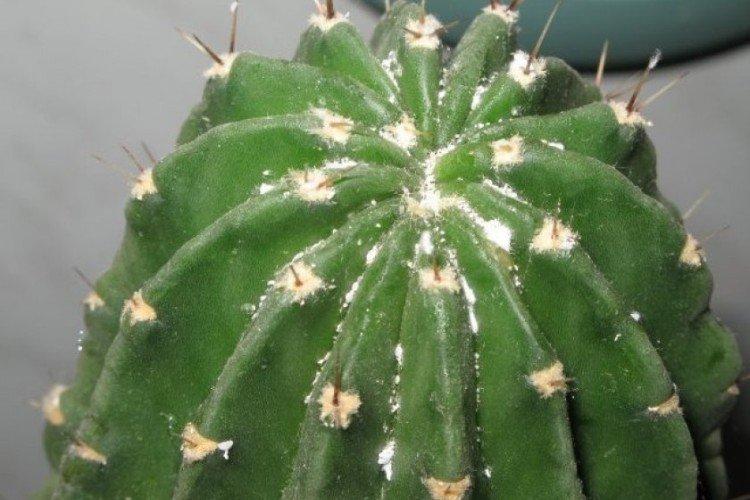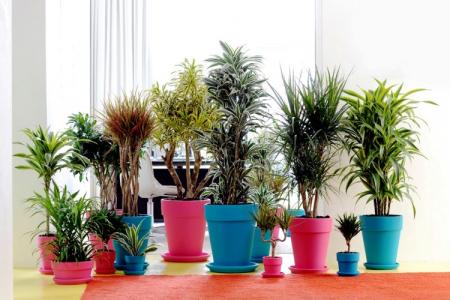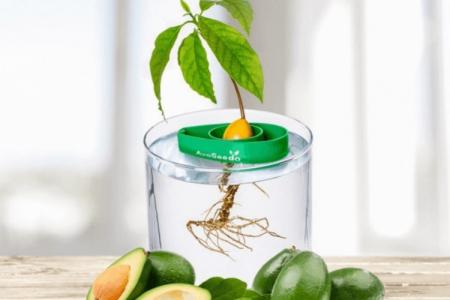
We love cacti for their unpretentiousness and for the fact that they remain beautiful even in spite of all the mistakes of novice florists. Still, we recommend not to tempt fate once again. Moreover, caring for them is really very simple. We will tell you how to care for a cactus at home!
The soil
Now in stores there are ready-made soil mixtures for cacti, and even for different species. But you can mix the soil yourself. It should be light, airy, well-draining, and not too acidic.
The usual soil for indoor plants must be diluted with baking powder - pebbles, sand, stone chips. Choose a substrate based on low-lying peat. Use dolomite flour and limestone to reduce acidity.
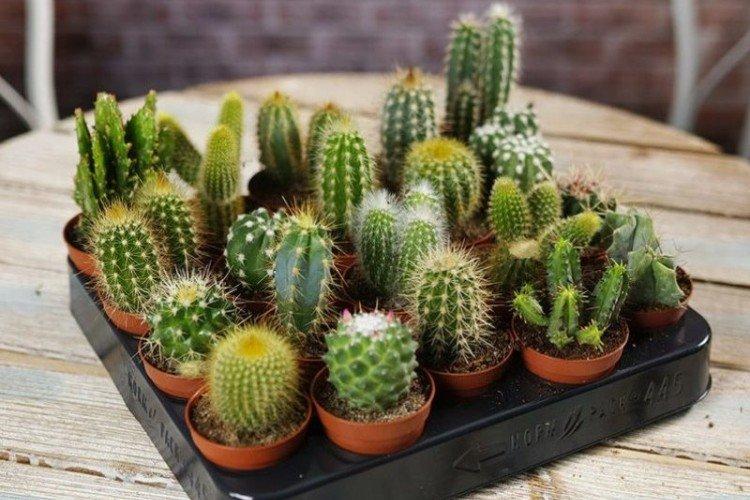
Pot
It is important that the size of the pot matches the root system of the cactus. If it is too small, the plant withers. And if on the contrary, it will spend resources on the development of roots, and not on the ground part. For cacti with long branched roots, wide pots are more suitable, and with rod-shaped ones, narrow but deep ones.
Can you plant different cacti in one pot?
Yes, you can, but these must be varieties with the same requirements for keeping conditions. In particular - to the soil, top dressing, lighting and watering.
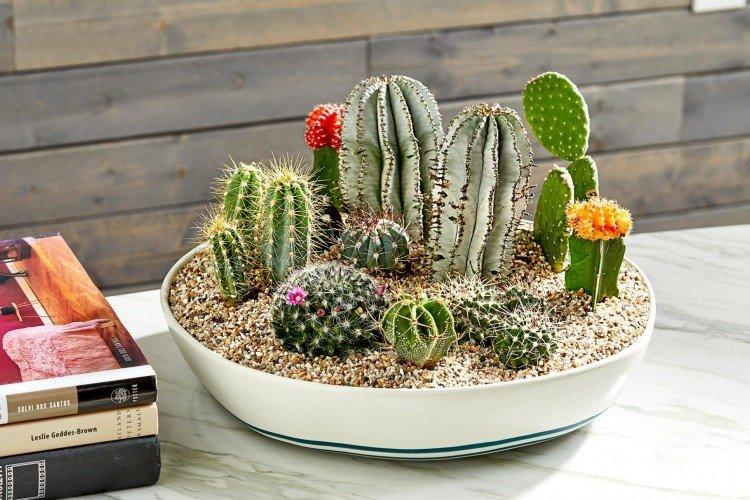
Lighting
It all depends on the specific variety, but most cacti tolerate bright sunlight. If you put them on the windowsill, make sure that the frame does not overlap the main part of the plant. The first sign of a lack of sun is when the tip grows long and thin. If there is too much of it, the skin of the cactus begins to turn slightly red.
Shading cactus
If such a need arises, organza or a mosquito net is enough for shading. It is imperative to hide freshly transplanted plants from direct sunlight, because they are more sensitive. It is also best to do this in early spring, when the first sunny days come. Train your cactus to light gradually over the course of a week.

Do I need to supplement the cactus in winter?
There are nuances here! Cacti can really hibernate with a minimal amount of light. The plant simply goes into a dormant state. But the fact is that this also requires a low temperature, and it is far from always the same in ordinary living rooms. Therefore, it is still better to light up the seedlings for at least 3-4 hours from top to bottom. LED phytolamps are ideal.
Can I put a cactus in a room without a window?
Often, cacti are placed in offices or bathrooms in the hope that their simplicity will help them survive. But in fact, only certain varieties are able to live in such conditions, because most of them are southern desert plants.
At best, the cactus simply won't grow and develop. So we recommend that you avoid such solutions. Or at least it is imperative to study the conditions of detention of a particular type and organize special lighting.
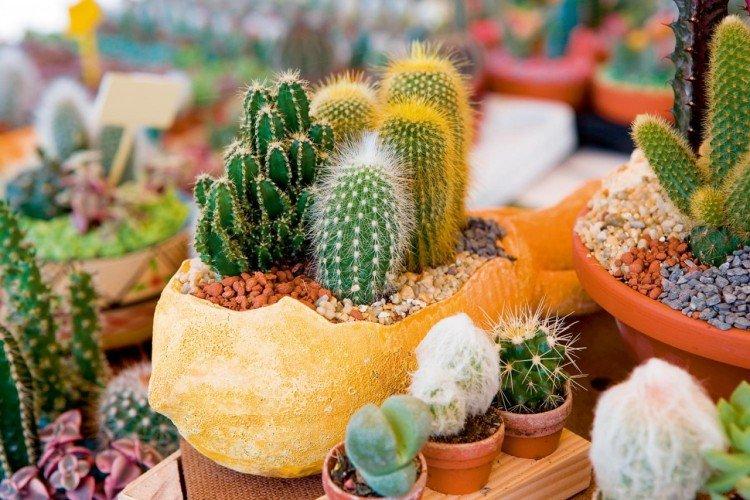
Temperature
In the summer, most cacti do well at 25-35 degrees, and can tolerate even higher temperatures. In winter, you can safely lower it to 5-10 degrees, and this is quite suitable for a state of rest. If you have a collection of plants in the same conditions, choose an intermediate 18-25 degrees, and don't worry.
Can cacti be kept outdoors in summer?
Yes, in summer, cacti feel great outdoors, on an open balcony or in a garden. Choose a sunny area, but gradually train them to the sun again. Make sure that the pots with the root system do not overheat. For this reason, they are recommended to be buried in the ground in the garden.

How to water a cactus?
Any cacti must be watered only with warm, settled or filtered water.You can not get water on the plant itself and allow it to stagnate. Moisture-loving varieties are watered more often, but desert varieties are enough several times a season. Therefore, there is no universal scheme, but remember: in the case of cacti, underfilling is always better than overfilling. And be sure to reduce the frequency of watering in winter!
Spraying
Most cacti are rather indifferent to spraying, so this procedure is not necessary. On the other hand, spraying helps keep dust out. But then use only warm water, very fine spray and perform the procedure early in the morning or in the evening, not under the sun. Cacti with pubescence should not be sprayed or washed.
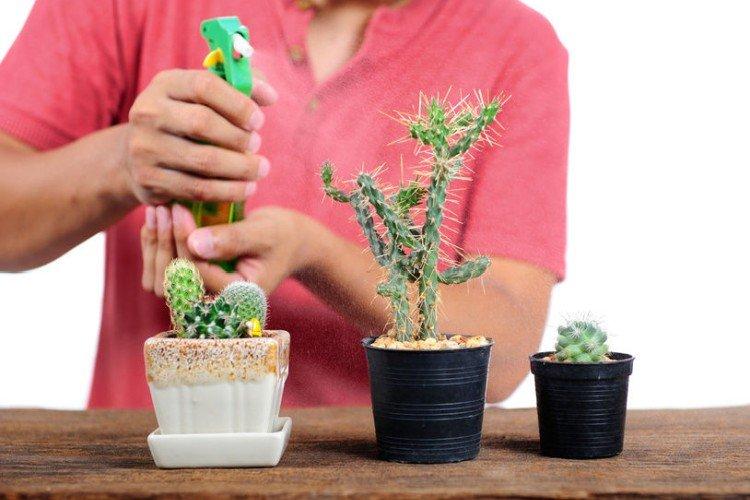
Top dressing and fertilizers
Minimal fertilizing with nitrogen, potassium, calcium and phosphorus is enough for cacti. Fertilizers are applied only during the period of active growth, so it is absolutely impossible to do this during rest. Keep in mind that off-the-shelf preparations are often too concentrated for cacti and succulents, and contain too much nitrogen.
Blooming cactus care
During this period, protect the plant from direct sunlight, ventilate often and avoid weeds. For flowering varieties, proper wintering with a state of dormancy is especially important in order to have time to accumulate strength. You should not twist the pot in different directions to the sun - let it stand in one place. Do not disturb the cactus with fertilization buds, permutations or transplants.

Cactus care with colored needles
Such varieties require especially a lot of light, but at the same time they do not tolerate direct sunlight. Varieties with yellow needles require enhanced feeding. If the cacti are artificially tinted, they need to be watered more often, and the dye should be mixed in 2-3 times. Before transplanting, the soil is also well spilled with tinted water.
Transfer
Cacti are transplanted in the spring, when they just gained strength for active growth. In the process, carefully trim off all damaged roots, disinfect the pot and soil, and arrange a rooting bath for the plant according to the instructions.
A generous drainage layer is needed when planting. The root collar necessarily remains on the surface, because if the trunk falls into the ground, it will begin to rot the next time it is watered. When you need to strengthen an unstable plant, line it with decorative pebbles. After transplanting, do not water the plant for 3-5 days, do not put it in direct sun and do not fertilize for 1-2 weeks.
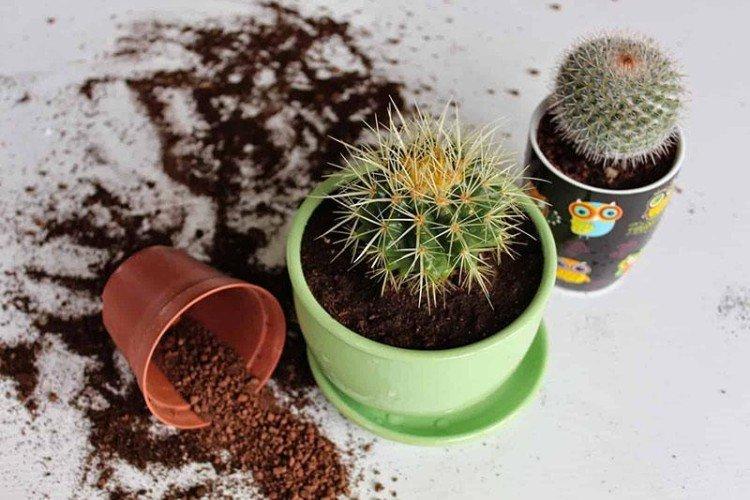
How to get a cactus out of a pot?
It is most convenient to pull out a cactus with gloves using paper tape or plastic tweezers. To avoid damaging the root, turn the pot over and tap the bottom. A healthy plant should not come out too easily or too tightly.
Reproduction of a cactus by children
Most of the cacti are simply reproduced by children, which simply need to be carefully pinched off and rooted in water or immediately in the ground. It is better to take already grown children, not less than 1.5-2 cm. When rooting in water, it should be warm (25-30 degrees), and not reach the trunk of the plant. The distance between the water level and the bottom of the cactus is 5-7 mm.
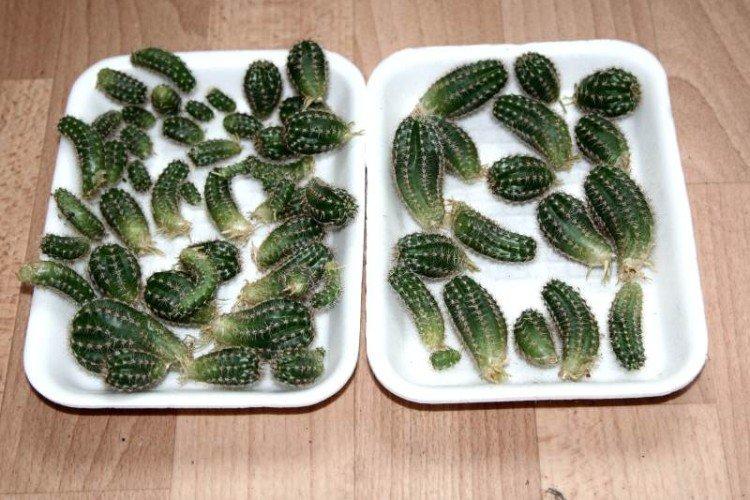
Propagation of a cactus by cuttings
Choose a sturdy and healthy stalk, cut off the top and sharpen slightly. Then it needs to be briefly immersed in the rooting solution and allowed to dry a little, about a week.
And then root the stalk vertically into the prepared soil to a depth of about 5 mm. Reinforce with a support or decorative stones if necessary. It can be rooted in water or wet foam, but it is more convenient in soil.
Diseases
The most common problems with cacti are fungi and rot. Most often, they appear due to improper care: excess moisture and low temperatures. It is important to remove damaged areas, reduce watering, provide warmth and sun, and use antifungal sprays and solutions.
If the trunk of a cactus is too soft, the problem is excess moisture. When the root system starts to rot, it is very difficult to save the plant.But you can try with an emergency transplant, removal of rotten roots and drying.
A light color change is a standard response to changing conditions, so it will usually go away on its own. Shedding buds or leaves can be a response to stress, and the death of young shoots is a sure sign of root damage during transplantation or pests.
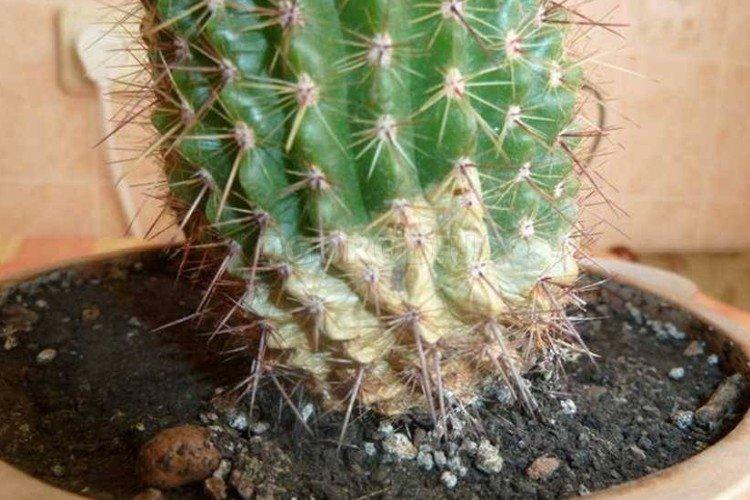
Cactus pests
Pests on cacti are rare. Occasionally, small mites settle on them, which leave behind rusty spots. Less often, whitish worms, scale insects and false scales appear. The methods of struggle are the same: remove everything that is removed with a cotton swab dipped in alcohol, and treat the plant with an insecticide according to the instructions.
